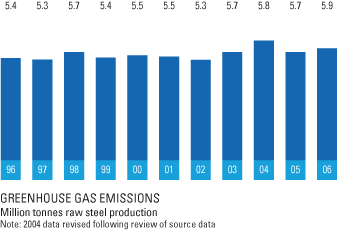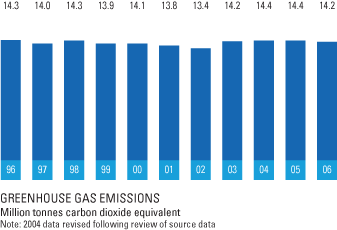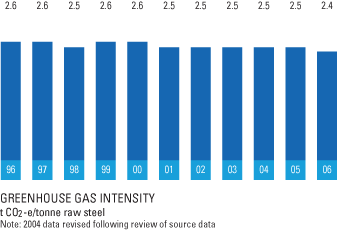GREENHOUSE GAS EMISSIONS
Steel products manufactured by BlueScope Steel are vital components in almost every part of the built and manufactured environment – from cars, railways, bridges and roads, to pipelines, wind turbines, machinery, houses, fences and even the backyard shed.
Steel manufacturing makes an important contribution to regional economies, exports and community prosperity. The Port Kembla Steelworks – the Company’s largest source of GHG emissions – is the largest manufacturer and exporter of manufactured products in New South Wales.

It directly employs approximately 3800 people and provides work for approximately 2800 on-site contractors. The flow-on benefits to the Illawarra region are estimated to be some 16,000 jobs and $1.86 billion in gross regional product. The Steelworks produces more than 5 million tonnes of steel per annum – about half of which was exported in 2005/06, earning some $1.25 billion.
Steelmaking generates greenhouse gas emissions, mainly carbon dioxide, both directly when making iron and steel, and indirectly through the use of electricity and gas in a range of steel manufacturing processes.
Coal (carbon) is an essential ingredient in the chemistry of blast furnace steelmaking, with greenhouse gases produced as an inevitable by-product. The majority of greenhouse gas emissions occur during the iron making process, where coal and coke is used as a chemical reductant to extract iron from iron ore in the blast furnace.
About three quarters of BlueScope Steel’s global GHG emissions are produced by the Port Kembla Steelworks, with the remainder accounted for by the Company’s New Zealand Steel integrated steelworks, its steel rolling, coating and painting plant at Western Port, in Victoria, and the Company’s mid-stream and downstream plants in Australia, Asia and the Pacific.
 |
 |
